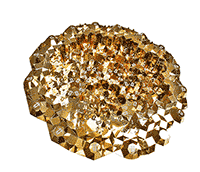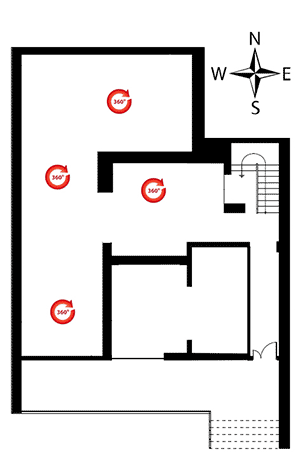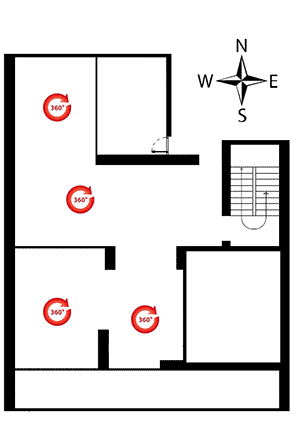You can see the image by
clicking on 360 degree logos.

|
Aisling
Sareh
Haghshenas
The
first
question
I am
always
asked
is:
You
stayed?
Why?
You
could
have
left…..
easily,
years
ago……
I am
a
Tehrani!
Tehran
is
my
home.
The
Tehran
of
my
childhood
is
not
what
you
see.
Over
the
past
40
years
parts
of
Tehran
have
completely
changed
as
though
the
city
I
knew
is a
distant
memory.
My
Tehran
is
disappearing
before
my
eyes.
It
is
changing
into
a
scary
ugly
concrete
monster.
It
is
rapidly
changing
and
the
people
who
have
moved
here
have
no
sense
of
belonging.
I
love
the
city
I
see,
but
it
only
exists
in
my
memory,
it
as
though
there
is a
city
co-existing
parallel
to
this
Tehran,
and
that
is
the
city
I
paint.
I am
a
Tehrani
but
Tehran
is
no
longer
my
city.
I
clearly
remember
the
weekends
of
Tehran
and
going
for
walks
and
drives
with
my
parents.
My
Tehran
has
colours,
each
neighbourhood
and
street
with
its
own
colour
and
a
smell.
These
colours
are
now
replaced
with
concrete,
stone
and
strange
forms.
To
this
day
when
someone
mentions
a
neighbourhood
I
imagine
the
colours.
Colours
and
scents
which
come
from
trees,
gardens,
swimming
pools
and
even
public
hangings
in
city
squares,
the
colour
of
memories
whether
good
or
bad.
There
are
many
trees,
houses
and
streets
that
will
always
remain
in
my
memory
though
they
disappeared
years
ago.
In
this
collection
I
have
tried
to
share
my
colours
with
you,
before
they
become
a
faded
memory.
These
are
some
of
the
colours
of
my
vanished
Tehran. |

|
Mahdieh
Pazoki
The
Margin
versus
The
Text
These
created
artworks
inspired
by
the
geometric
and
traditional
decoration
of
Iranian
architecture.
Geometric
motifs
in
traditional
artworks
attributed
to
the
sublime,
due
to
the
fact
that,
its
design
is
based
on
mathematical
ratios
between
basic
geometric
shapes,
and
it
has
been
tried,
in
the
past,
that
the
human
senses
have
the
least
interference
in
its
creation.
Combining
architectural
decorative
and
feminine
elements
tends
to
create
new
forms
that
are
at
odds
with
its
sacred
basic
derivation.
Created
partitions
and
failures
between
geometric
forms
or
sprains
in
it,
have
tried
to
tarnish
and
reducing
its
predetermined
sustainable
order
and
balanced
geometric
structure;
ultimately
traditional
elements
characterized
other
than
what
is
common
and
they
have
also
distanced
themselves
from
mere
ornamentation
and
reproduce
new
concepts
and
elements.
The
artworks
positioning
on
the
corners
and
the
margins
accentuate
ignored
and
neglected
places
in a
constant
cubic
space
and
it
attempts
to
challenge
the
tyranny
on
the
conventional
space
of
artworks
exhibition,
which
is a
determining
factor
on
work
of
arts
and
challenge
the
status
quo.
Finally,
the
nature
and
the
function
of
the
materials,
which
are
used
in
the
artworks
are
in
conflict
with
the
tradition. |
|
|
First
floor

second
floor

|
|
|